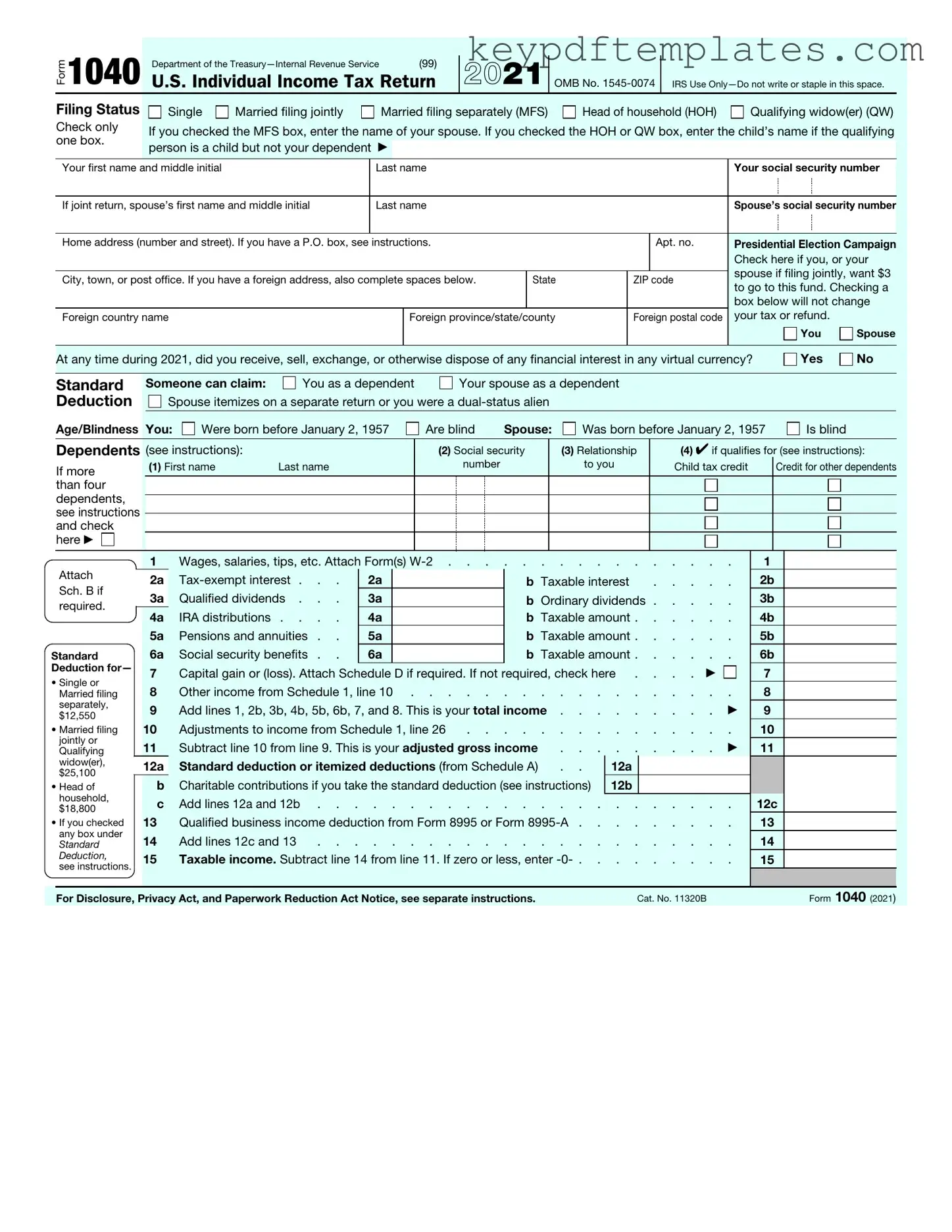Get IRS 1040 Form
The IRS 1040 form is the standard federal income tax form used by individuals to report their income and calculate their tax liability. This form allows taxpayers to detail their income sources, claim deductions, and determine any credits for which they may be eligible. Completing the 1040 is a crucial step in fulfilling tax obligations each year.
Modify Document Online
